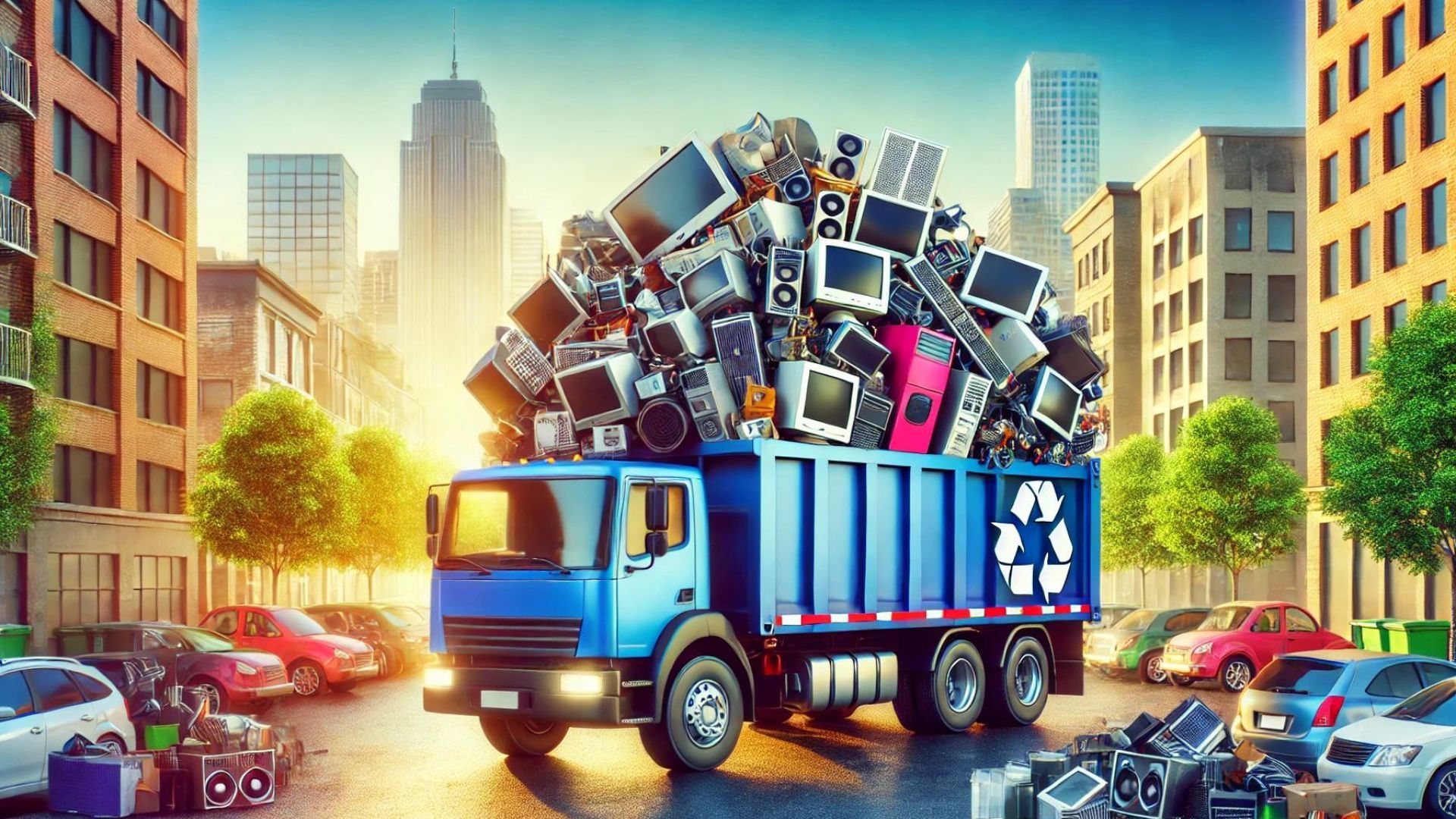The Ultimate Guide to E-Waste Recycling Services
Got an old laptop gathering dust or a drawer full of dead cell phones? You’re not alone. With technology evolving at lightning speed, it's easy to accumulate outdated electronics. Simply tossing them in the trash is harmful to the environment and illegal in many places. That’s why
e-waste recycling services exist—to help you responsibly dispose of your electronics and protect the planet. This guide covers everything you need to know about e-waste recycling, including why it's essential, how the process works, and tips on finding the best service near you.
What Is E-Waste?
E-waste, short for electronic waste, includes any discarded electronic devices or components. This category spans from old cell phones and computers to televisions, printers, and household appliances.
Examples of Common E-Waste:
- Mobile phones & tablets
- Computers & laptops
- Televisions & monitors
- Printers & scanners
- Household appliances (microwaves, toasters)
- Video game consoles & accessories
Why Is E-Waste Recycling Important?
1. Environmental Impact
Electronic devices contain hazardous substances like lead, mercury, and cadmium, which can contaminate soil and water if not disposed of properly. Recycling reduces the risk of these toxins entering the environment.
2. Resource Recovery
Electronics are made from precious materials like copper, gold, and silver. Recycling allows these materials to be reused, reducing the need for mining and conserving natural resources.
3. Data Security
Disposing of electronics properly helps protect your sensitive data. Professional e-waste recyclers can safely wipe data from devices to ensure your information doesn’t fall into the wrong hands.
How E-Waste Recycling Services Work
1. Collection
- E-waste recycling services collect your old electronics through drop-off locations, scheduled pickups, or mail-in programs.
2. Sorting and Data Removal
- Once collected, items are sorted based on their type (phones, computers, TVs). Sensitive data is securely wiped or destroyed to ensure privacy.
3. Dismantling and Separation
- Devices are dismantled to separate different components: metals, plastics, and glass. Some parts are refurbished for reuse, while others are sent for material recovery.
4. Recycling and Disposal
- Recyclable materials like metals and plastics are processed for reuse. Non-recyclable components are disposed of safely to minimize environmental impact.
Finding a Reliable E-Waste Recycling Service
| Consideration | What to Look For |
|---|---|
| Certifications | Look for certified e-waste recyclers (e.g., R2, e-Stewards) ensuring ethical disposal. |
| Data Security Protocols | Ensure the service securely wipes or destroys data from devices. |
| Environmental Practices | Ask about their recycling process and whether they responsibly dispose of hazardous materials. |
| Convenience | Find a service that offers convenient drop-off, pickup, or mail-in options. |
Pro Tip: Check if local municipalities host free e-waste recycling events—these are great for getting rid of large quantities of electronics safely.
The Do’s and Don’ts of E-Waste Recycling
To make sure your e-waste is properly recycled, here are some tips:
- Do: Backup & Wipe Your Data
Before recycling any device, back up your important data and then perform a factory reset or use a data-wiping tool.
- Do: Check for Trade-In or Take-Back Programs
Many retailers and manufacturers offer trade-in programs where you can recycle old devices for store credit or discounts.
- Do: Separate Batteries from Device
Some e-waste recycling services require batteries to be removed from devices before drop-off. Batteries contain hazardous chemicals and should be disposed of separately.
- Don't: Throw E-Waste in the Trash
Never dispose of electronic devices in regular trash bins. Not only is this harmful to the environment, but it is also illegal in many places.
FAQs about E-Waste Recycling Services
Q: How much does e-waste recycling cost?
A: While many services offer free recycling for small electronics, some may charge fees for large items like TVs and refrigerators. It’s best to check with the recycling service for a specific quote.
Q: Can I recycle broken electronics?
A: Yes! E-waste recyclers accept broken devices, and they can often recover valuable materials from them.
Q: How do I know my data is safe when recycling a device
A: Use a service that offers secure data destruction. Alternatively, you can use data-wiping software before handing over your device.
Q: What happens to the electronics after they're recycled?
A: Recyclable materials like metals, plastics, and glass are recovered and used to manufacture new products. Hazardous materials are disposed of safely, and some components are refurbished for resale.
The Environmental Benefits of E-Waste Recycling
Reducing Pollution
E-waste contains harmful substances like lead, cadmium, and mercury, which can seep into soil and water if disposed of improperly. Recycling reduces this environmental pollution.
Conserving Natural Resources
By recycling e-waste, valuable metals and materials are recovered, which conserves natural resources and reduces the energy needed for mining and manufacturing.
Promoting Circular Economy
Recycling e-waste helps create a circular economy where materials are continually reused rather than being discarded as waste. This reduces the demand for new raw materials and promotes sustainability.
How to Prepare Your Electronics for Recycling
| Step | Instructions |
|---|---|
| Backup Your Data | Save any important files, photos, or contacts to a cloud service or external storage. |
| Perform a Factory Reset | Use the factory reset option on your device to erase all personal data. |
| Remove Accessories | Take out batteries, SIM cards, memory cards, and any detachable accessories. |
| Check for Local Guidelines | Ensure you're following your recycling service's guidelines for preparing electronics. |
E-Waste Recycling Options
1. Retailer Take-Back Programs
Many electronics retailers, like Best Buy or Staples, offer take-back programs where you can drop off old electronics for free or a small fee.
2. Manufacturer Recycling Programs
Some tech companies (e.g., Apple, Dell) offer recycling programs for their products. You can mail your old devices or drop them off at participating locations.
3. Community E-Waste Drives
Many cities and towns host periodic e-waste collection events, where you can drop off electronics for safe disposal.
4. Professional E-Waste Recycling Services
For large volumes or bulky electronics, consider hiring a professional service. They often offer pickup options and handle all types of e-waste.
Encouraging E-Waste Recycling: Share Your Tips
Have you recycled electronics before? What tips do you have for those looking to declutter their gadgets responsibly? Share your experience in the comments below and inspire others to recycle their e-waste!
If this guide helped you, share it with your friends and family. Let's spread the word and help everyone get rid of their electronics responsibly.
Do Your Part for the Planet with E-Waste Recycling
E-waste recycling is a small step that makes a big difference. By choosing to recycle your old electronics, you're helping conserve resources, reduce pollution, and promote sustainable practices. So, the next time you're ready to upgrade your phone or laptop, remember to recycle the old one responsibly.
Ready to recycle your e-waste? Contact our reliable e-waste recycling service today for secure, eco-friendly disposal of your electronics.
Contact us
If you have any questions or need any assistance after business hours, please get in touch.
Phone
BUSINESS HOURS
- Monday
- -
- Tuesday
- -
- Wednesday
- -
- Thursday
- -
- Friday
- -
- Saturday
- -
- Sunday
- Closed
All Rights Reserved | Alpha Dog Junk Removal


